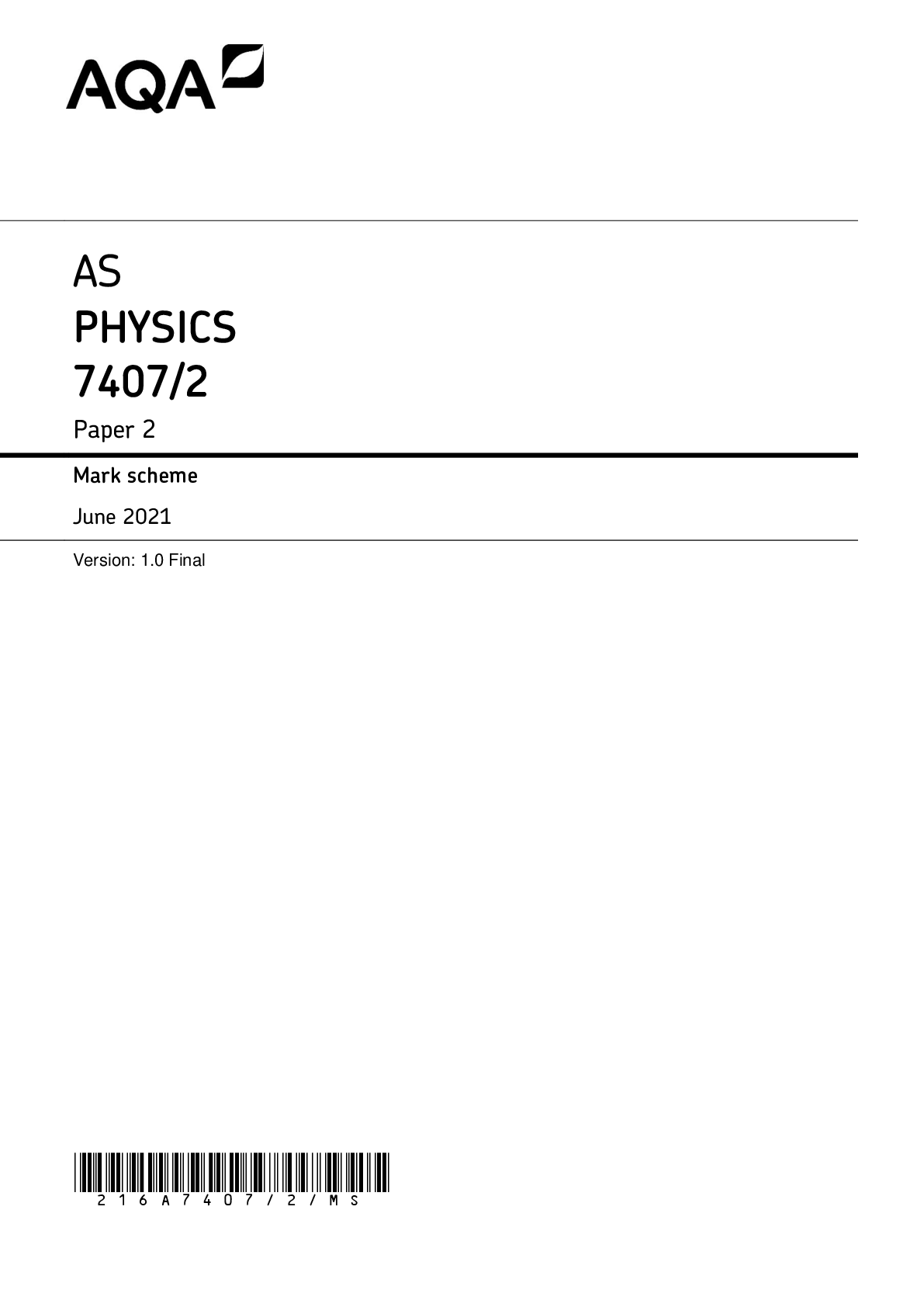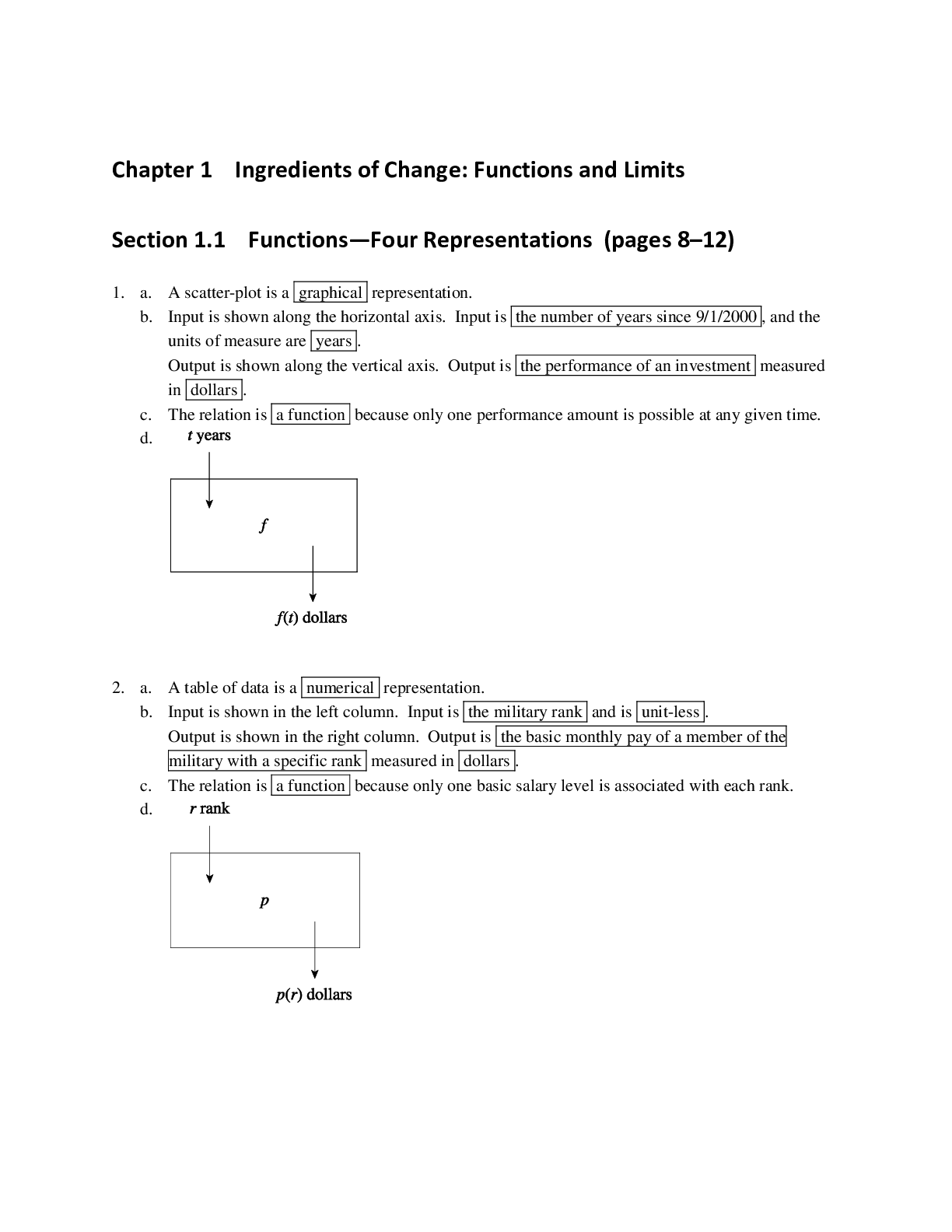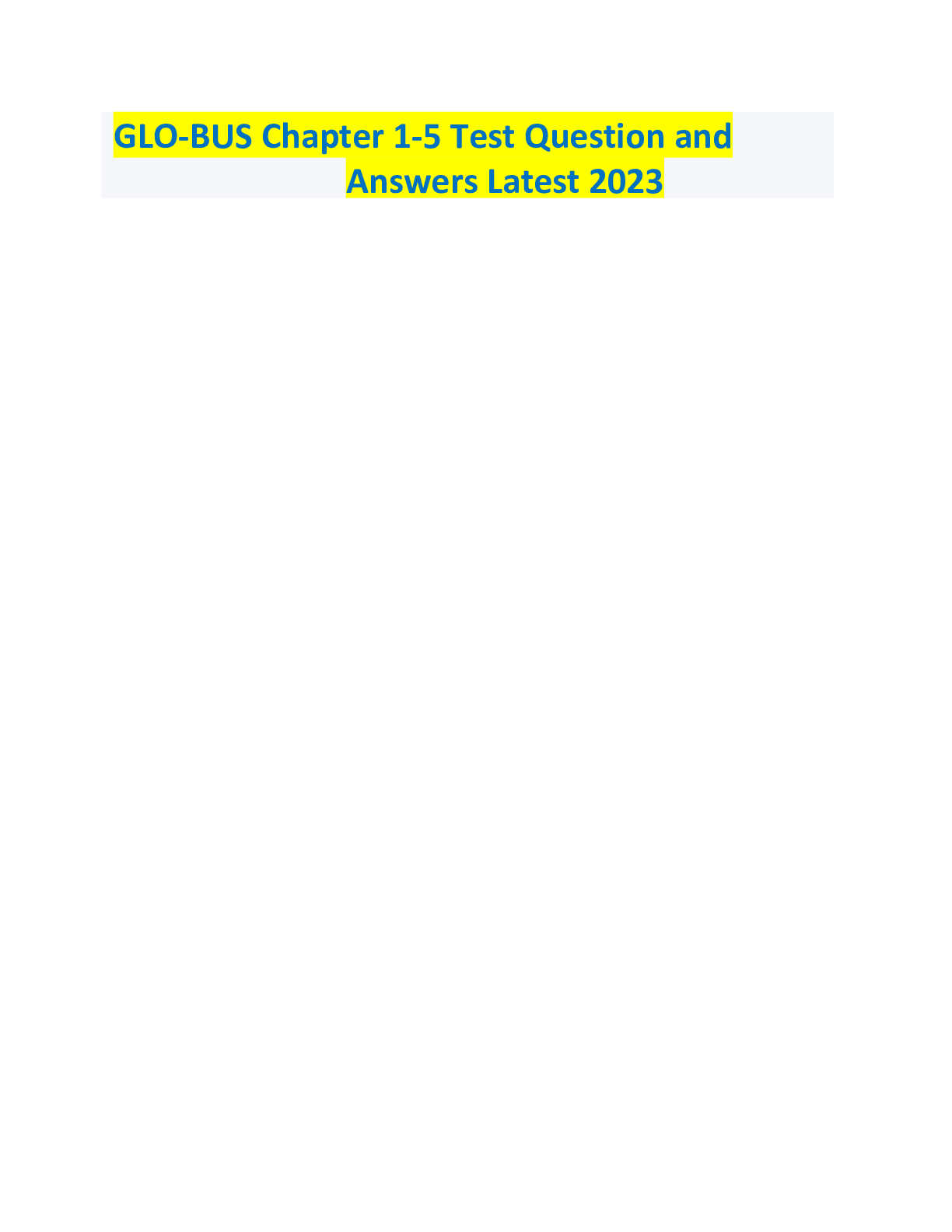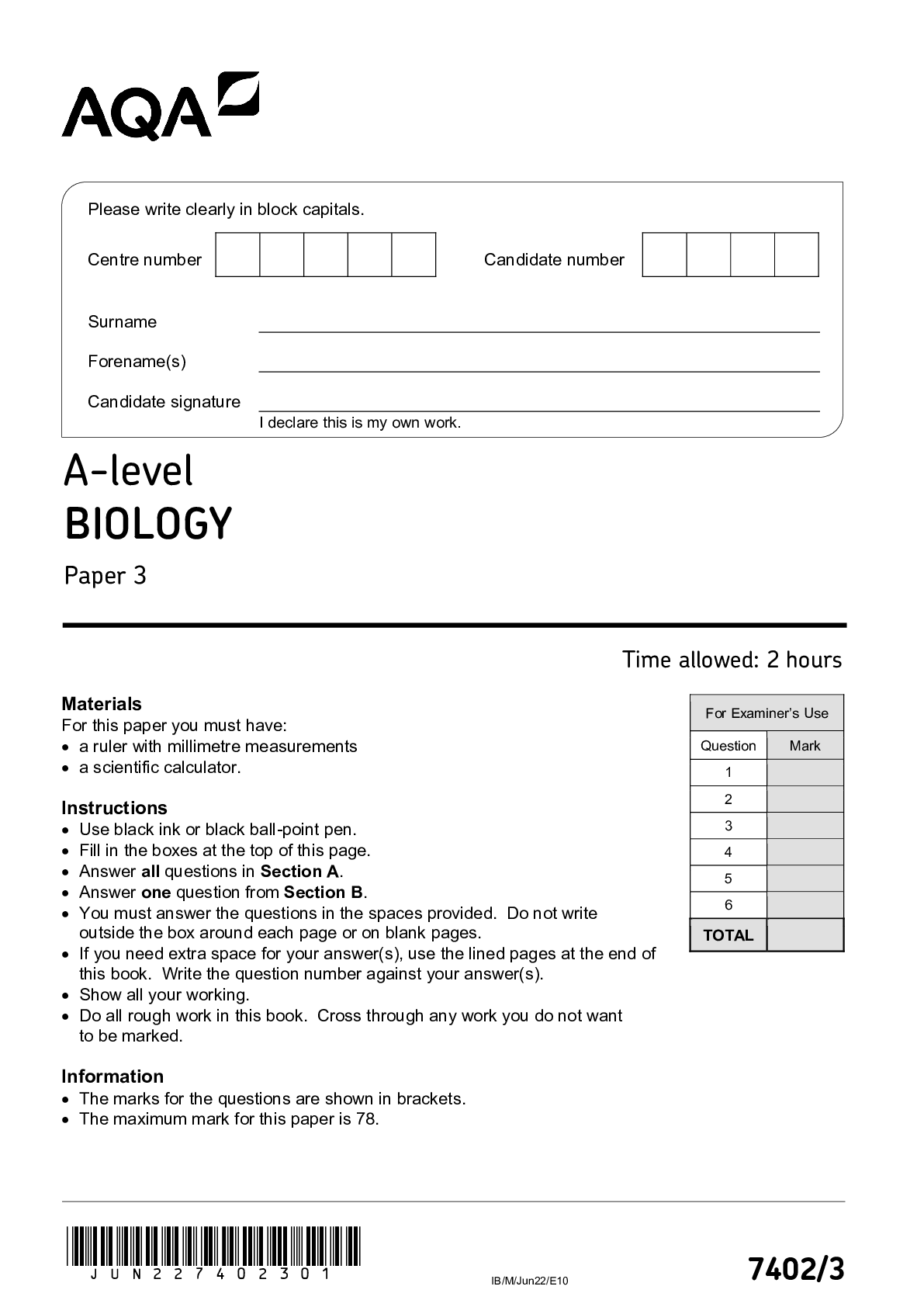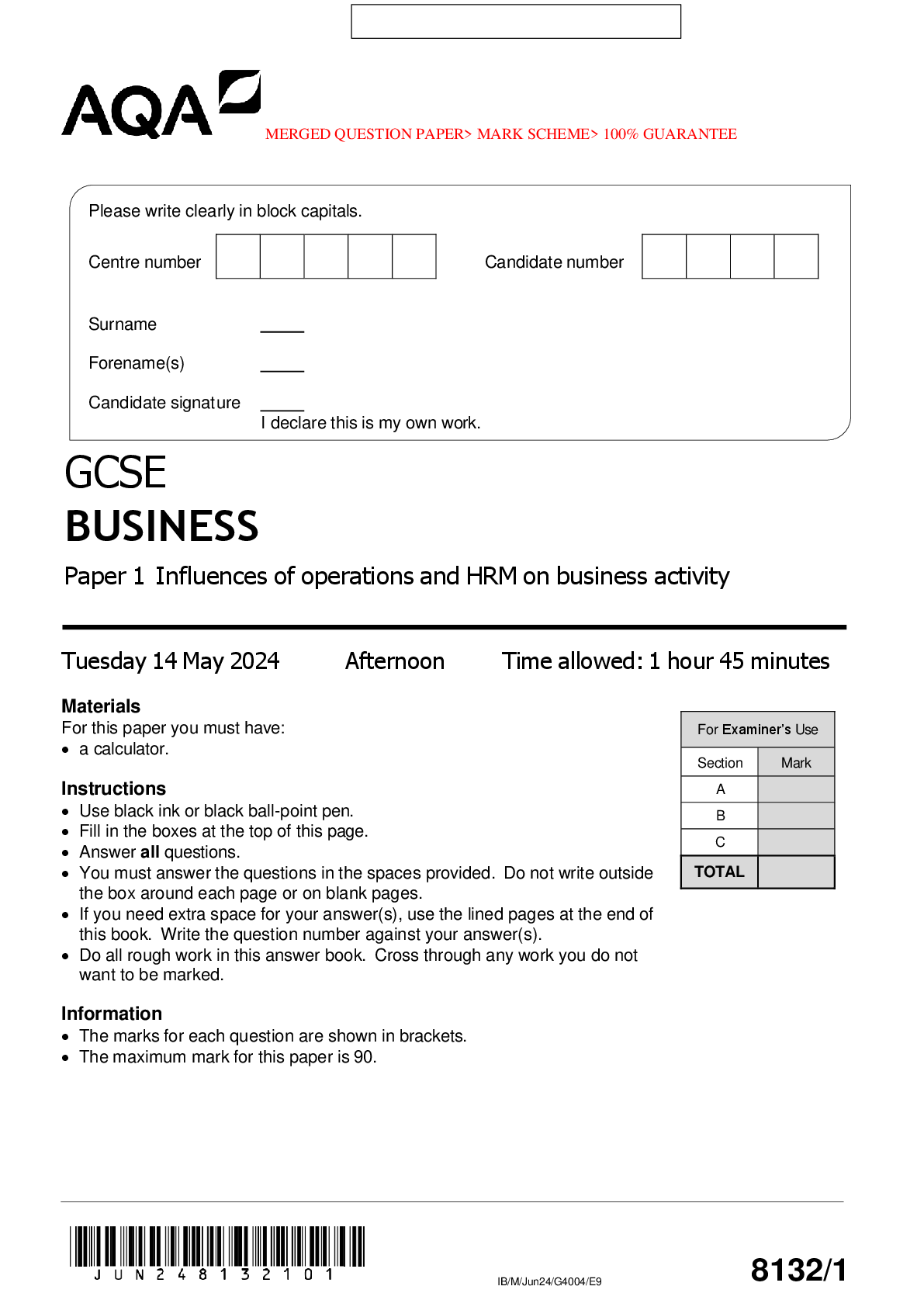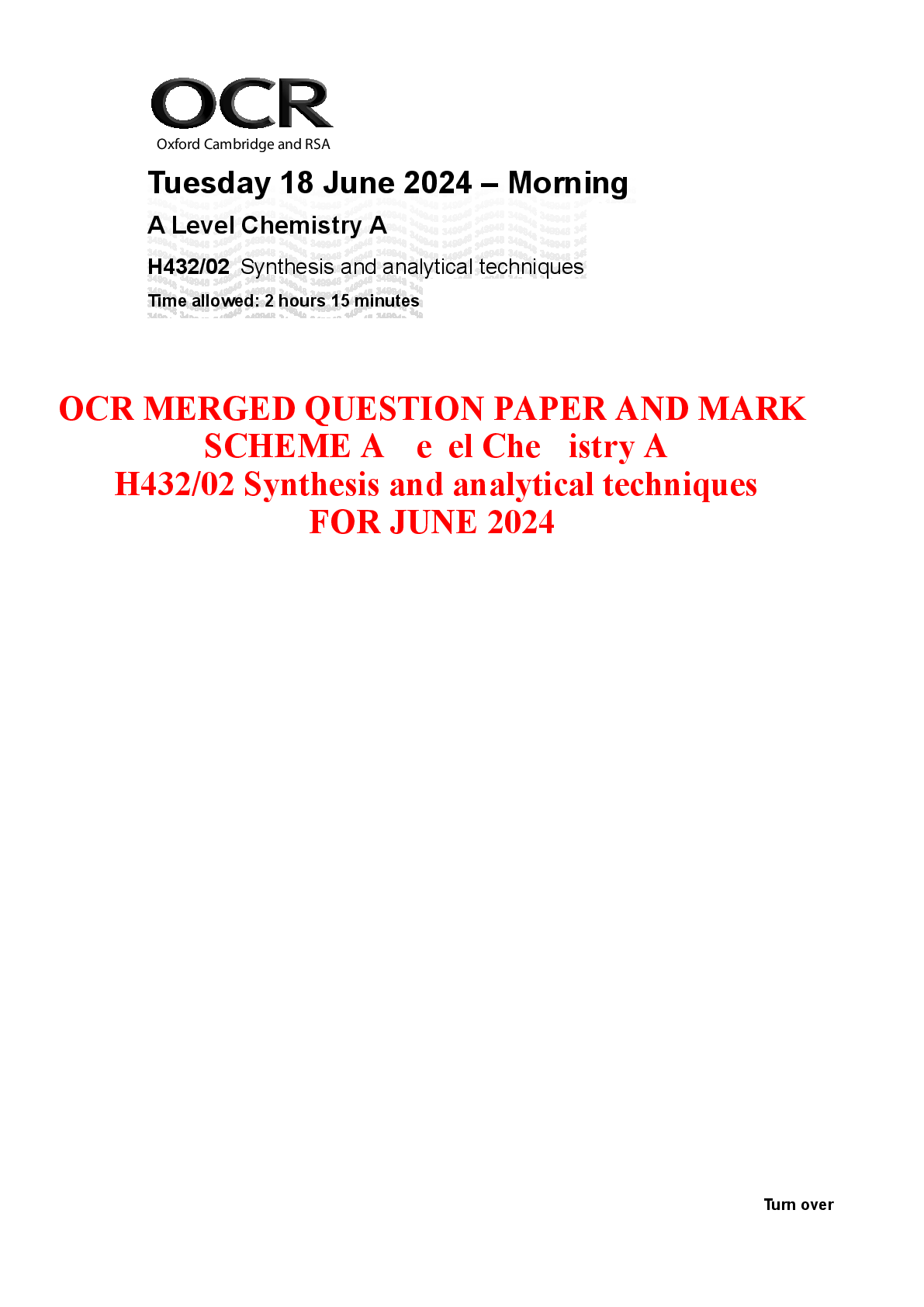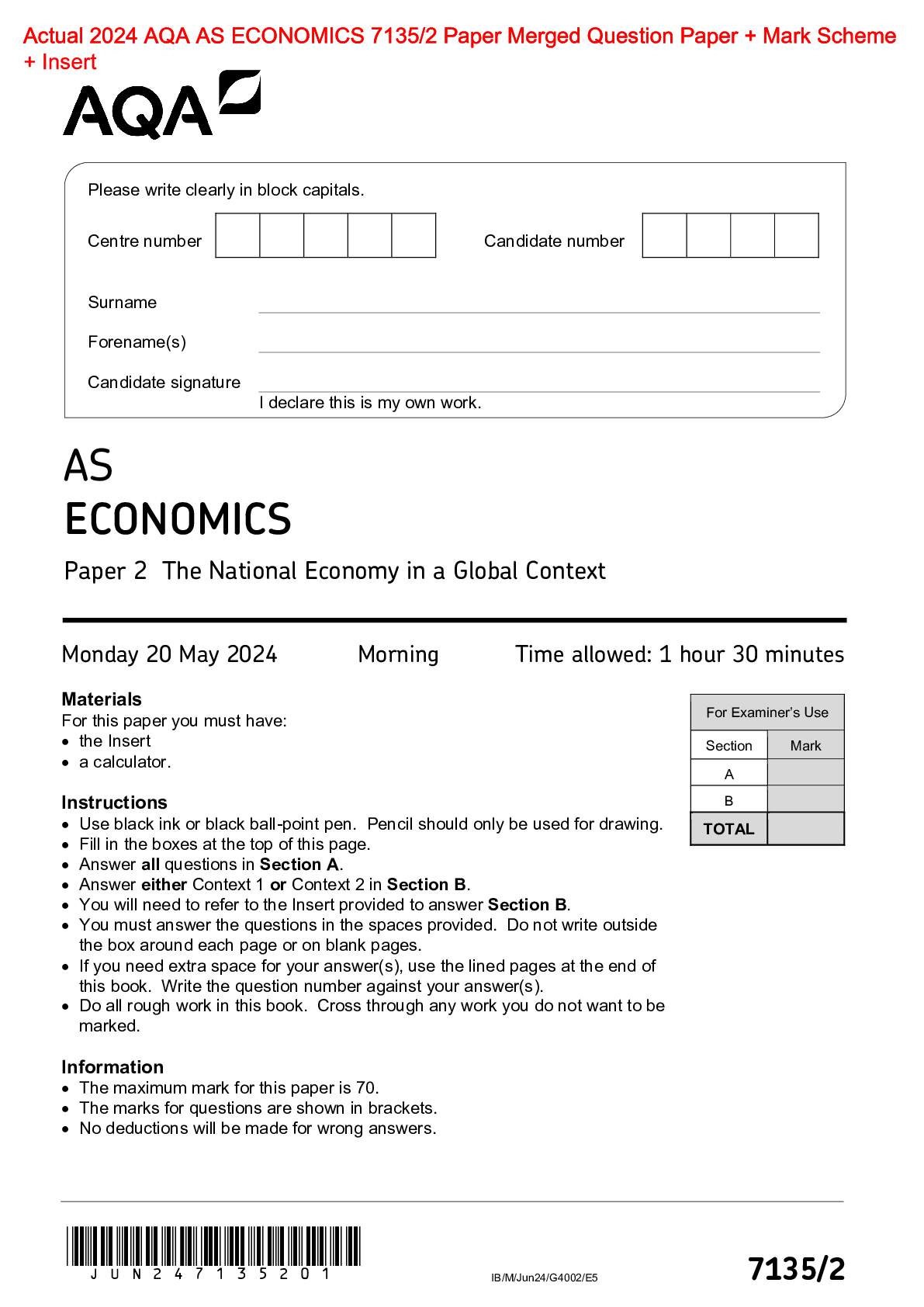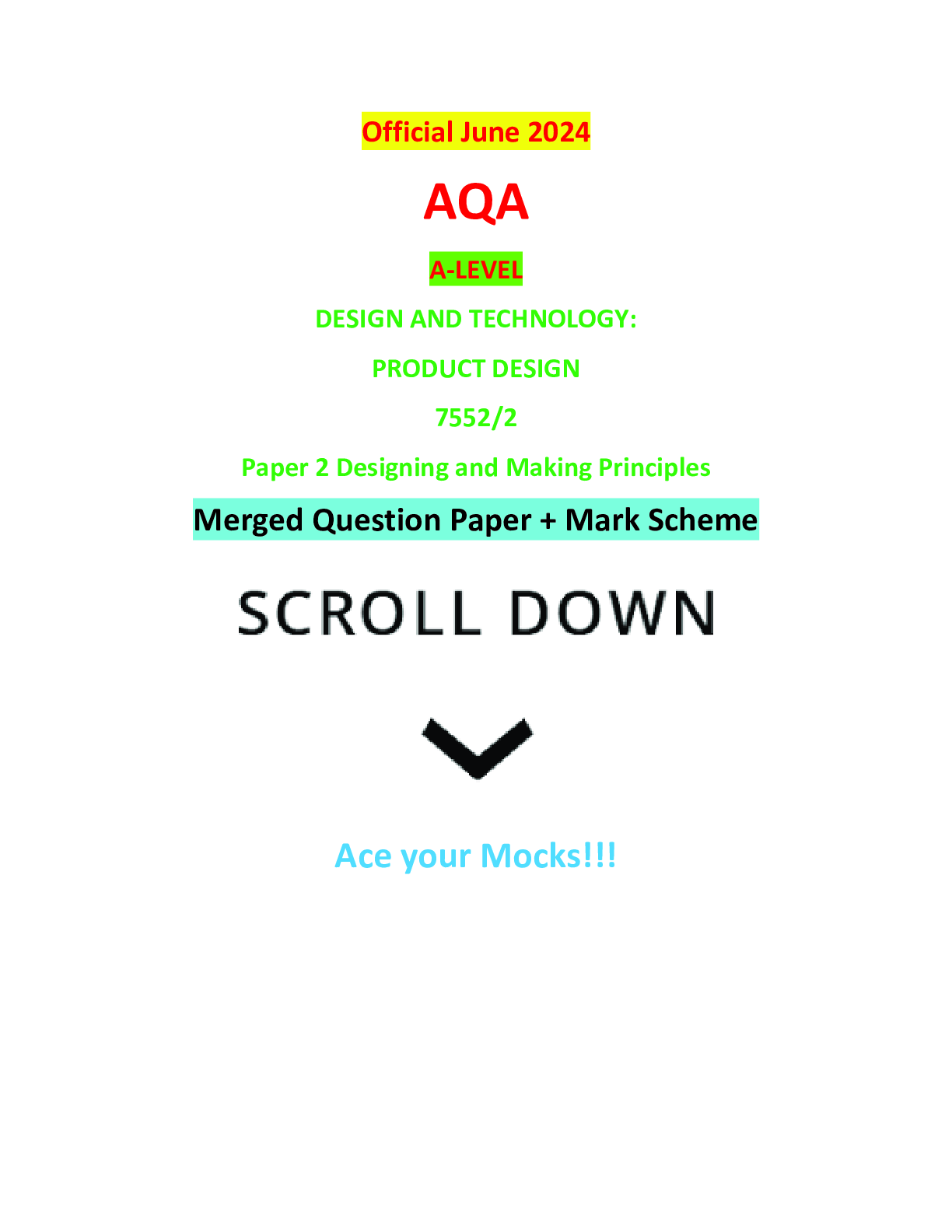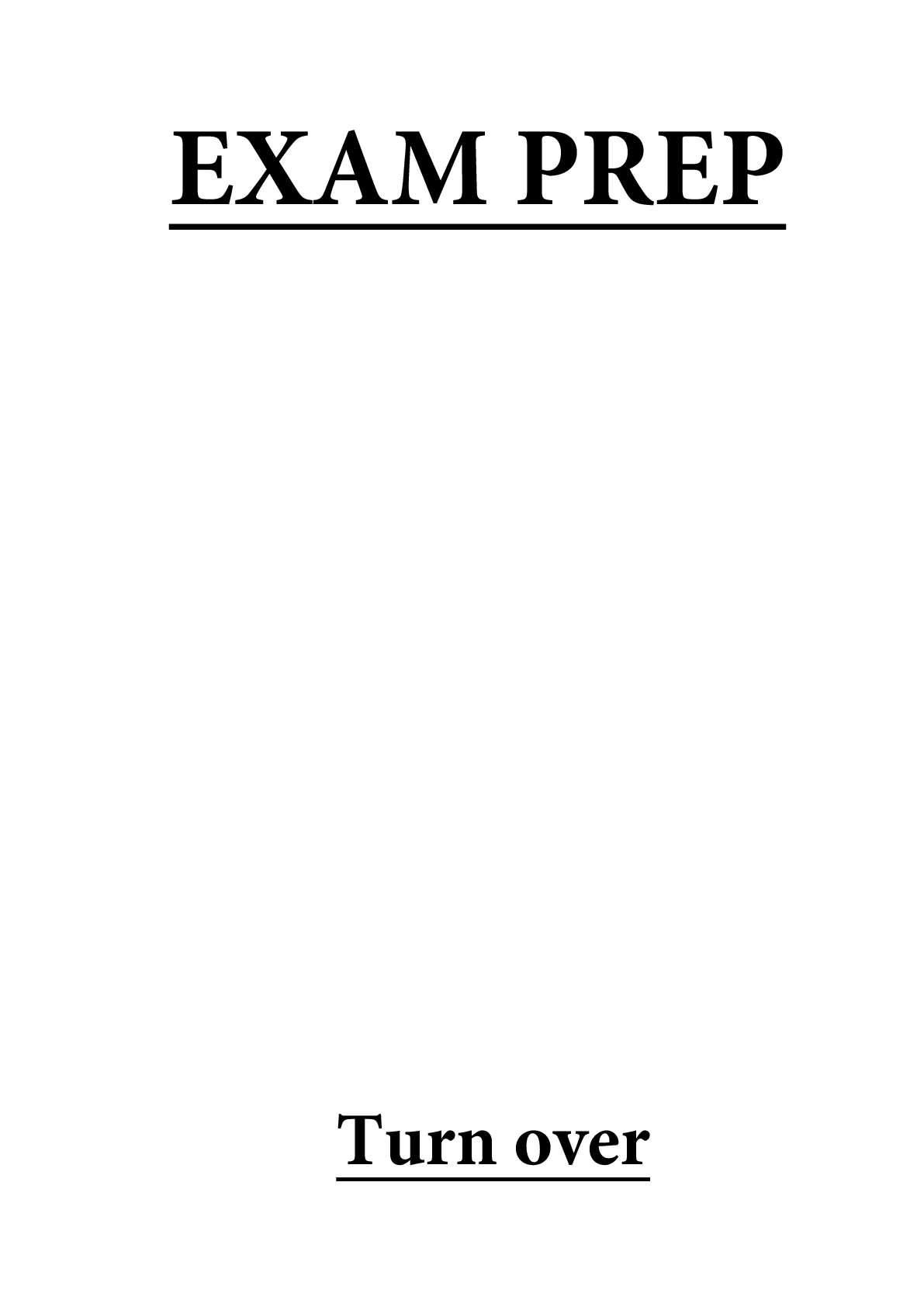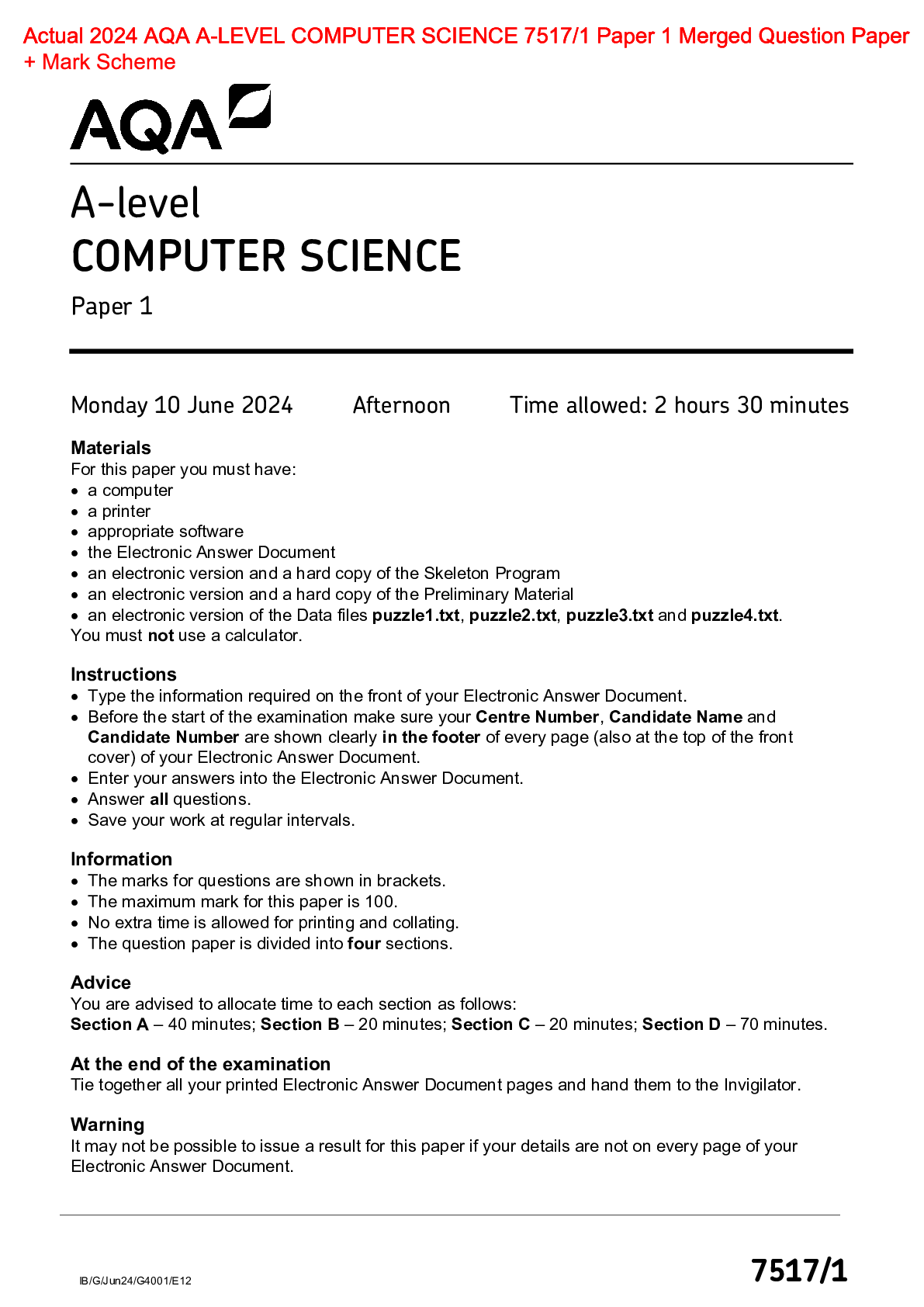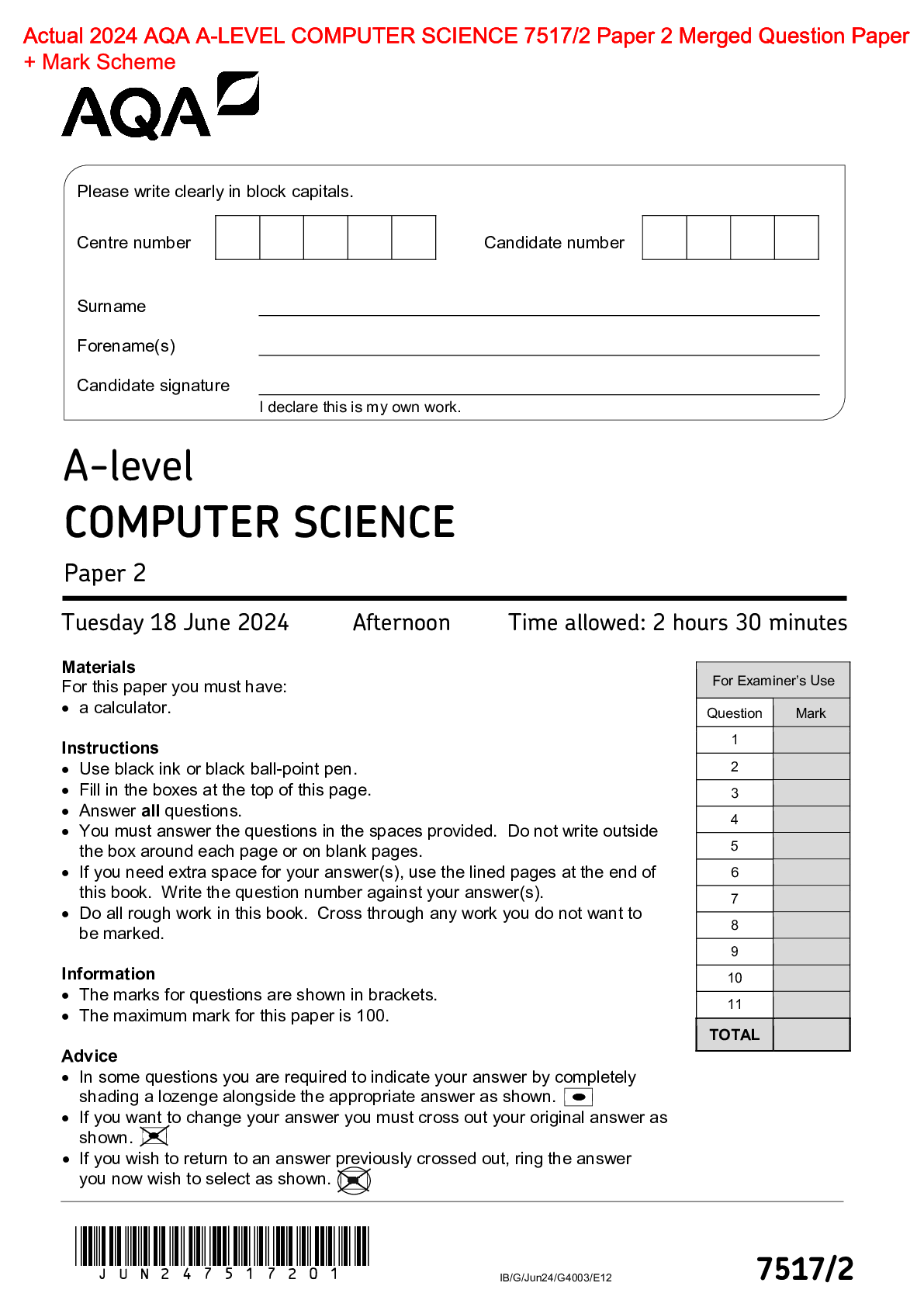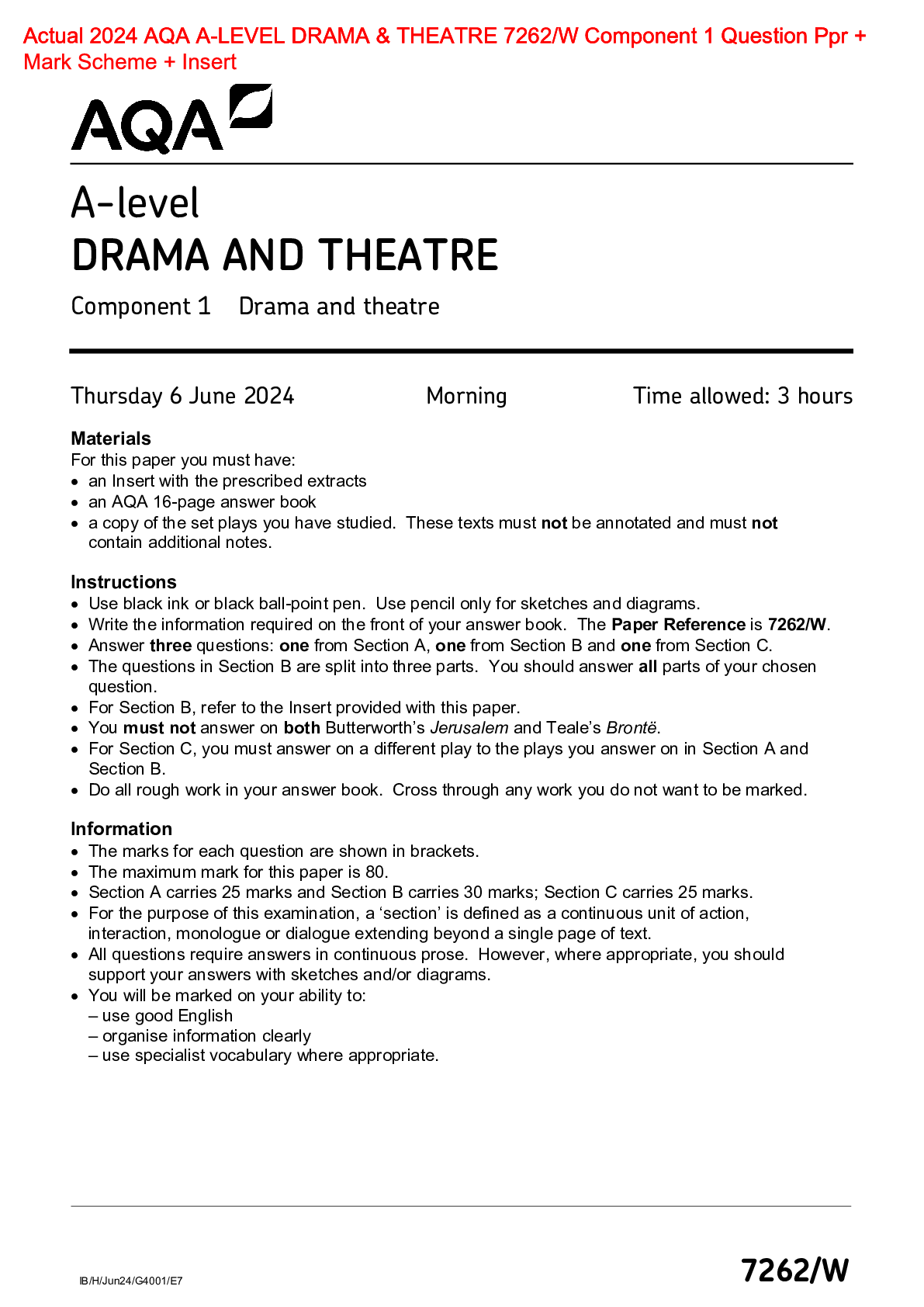AS BIOLOGY 7401/1 Paper 1 Mark scheme June 2022 Version: 1.0 Final *226A7401/1/MS*
Document Content and Description Below
AS
BIOLOGY
7401/1
Paper 1
Mark scheme
June 2022
Version: 1.0 Final
*226A7401/1/MS*
MARK SCHEME – AS BIOLOGY – 7401/1 – JUNE 2022
2
Mark schemes are prepared by the Lead Assessment Wri
...
ter and considered, together with the relevant
questions, by a panel of subject teachers. This mark scheme includes any amendments made at the
standardisation events which all associates participate in and is the scheme which was used by them in
this examination. The standardisation process ensures that the mark scheme covers the students’
responses to questions and that every associate understands and applies it in the same correct way.
As preparation for standardisation each associate analyses a number of students’ scripts. Alternative
answers not already covered by the mark scheme are discussed and legislated for. If, after the
standardisation process, associates encounter unusual answers which have not been raised they are
required to refer these to the Lead Examiner.
It must be stressed that a mark scheme is a working document, in many cases further developed and
expanded on the basis of students’ reactions to a particular paper. Assumptions about future mark
schemes on the basis of one year’s document should be avoided; whilst the guiding principles of
assessment remain constant, details will change, depending on the content of a particular examination
paper.
Further copies of this mark scheme are available from aqa.org.uk
Copyright information
AQA retains the copyright on all its publications. However, registered schools/colleges for AQA are permitted to copy material from this booklet for their
own internal use, with the following important exception: AQA cannot give permission to schools/colleges to photocopy any material that is
acknowledged to a third party even for internal use within the centre.
Copyright © 2022 AQA and its licensors. All rights reserved.
MARK SCHEME – AS BIOLOGY – 7401/1 – JUNE 2022
3
Mark scheme instructions to examiners
1. General
The mark scheme for each question shows:
• the marks available for each part of the question
• the total marks available for the question
• the typical answer or answers which are expected
• Extra information to help the examiner make his or her judgement and help to delineate what
is acceptable or not worthy of credit or, in discursive answers, to give an overview of the area
in which a mark or marks may be awarded.
The extra information in the ‘Comments’ column is aligned to the appropriate answer in the left�hand part of the mark scheme and should only be applied to that item in the mark scheme.
At the beginning of a part of a question a reminder may be given, for example: where
consequential marking needs to be considered in a calculation; or the answer may be on the
diagram or at a different place on the script.
In general the right-hand side of the mark scheme is there to provide those extra details which
confuse the main part of the mark scheme yet may be helpful in ensuring that marking is
straightforward and consistent.
2. Emboldening
2.1 In a list of acceptable answers where more than one mark is available ‘any two from’ is
used, with the number of marks emboldened. Each of the following bullet points is a
potential mark.
2.2 A bold and is used to indicate that both parts of the answer are required to award the
mark.
2.3 Alternative answers acceptable for the same mark are indicated by the use of OR.
Different terms in the mark scheme are shown by a/; eg allow smooth/free movement.
3. Marking points
3.1 Marking of lists
This applies to questions requiring a set number of responses, but for which students
have provided extra responses. The general principle to be followed in such a situation is
that ‘right + wrong = wrong’.
Each error/contradiction negates each correct response. So, if the number of
errors/contradictions equals or exceeds the number of marks available for the question,
no marks can be awarded.
However, responses considered to be neutral (often prefaced by ‘Ignore’ in the
‘Comments’ column of the mark scheme) are not penalised.
MARK SCHEME – AS BIOLOGY – 7401/1 – JUNE 2022
4
3.2 Marking procedure for calculations
Full marks can be given for a correct numerical answer, without any working shown.
However, if the answer is incorrect, mark(s) can usually be gained by correct
substitution/working and this is shown in the ‘Comments’ column or by each stage of a
longer calculation.
3.3 Interpretation of ‘it’
Answers using the word ‘it’ should be given credit only if it is clear that the ‘it’ refers to the
correct subject.
3.4 Errors carried forward, consequential marking and arithmetic errors
Allowances for errors carried forward are most likely to be restricted to calculation
questions and should be shown by the abbreviation ECF or consequential in the mark
scheme.
An arithmetic error should be penalised for one mark only unless otherwise amplified in
the mark scheme. Arithmetic errors may arise from a slip in a calculation or from an
incorrect transfer of a numerical value from data given in a question.
3.5 Phonetic spelling
The phonetic spelling of correct scientific terminology should be credited unless there is a
possible confusion with another technical term.
3.6 Brackets
(…..) are used to indicate information which is not essential for the mark to be awarded
but is included to help the examiner identify the sense of the answer required.
3.7 Ignore/Insufficient/Do not allow
Ignore or insufficient is used when the information given is irrelevant to the question or not
enough to gain the marking point. Any further correct amplification could gain the marking
point.
Do not allow means that this is a wrong answer which, even if the correct answer is
given, will still mean that the mark is not awarded.
MARK SCHEME – AS BIOLOGY – 7401/1 – JUNE 2022
5
Question Marking Guidance Mark Comments
01.1 B: is hydrolysed in the ileum and a product of
this hydrolysis is found in micelles;
A: is formed by a condensation reaction
between two α-glucose molecules;
C: is formed by the action of DNA polymerase;
B: gives a positive result in an emulsion test;
4
(4 x AO1)
Question Marking Guidance Mark Comments
01.2 1. Facilitated diffusion of amino acid (into cell
when higher concentration in lumen);
2. Co-transport;
3. Sodium ions actively transported from cell to
blood/capillary/tissue fluid;
4. Creating sodium ion concentration/diffusion
gradient;
5. Facilitated diffusion of amino acid into
blood/capillary;
4 max
(4 x AO1)
1. and 5. Accept
diffusion via
channel/carrier
proteins for ‘facilitated
diffusion’
3. Accept ‘pumped’ for
transported
3. and 4. Accept Na+
for sodium ion(s)
3. and 4. Max 1 if ions
not mentioned
MARK SCHEME – AS BIOLOGY – 7401/1 – JUNE 2022
6
Question Marking Guidance Mark Comments
02.1 1. RNA/rRNA;
2. Protein; 2
(2 x AO1)
Reject tRNA and
mRNA
Ignore amino acids
Question Marking Guidance Mark Comments
02.2 1. DNA has deoxyribose, mRNA has ribose;
2. DNA has thymine, mRNA has uracil;
3. DNA long, mRNA short;
4. DNA is double stranded, mRNA is single
stranded;
5. DNA has hydrogen bonds, mRNA has no
hydrogen bonds
OR
DNA has (complementary) base pairing,
mRNA does not;
4 max
(4 x AO1)
Must be comparisons
Ignore splicing/introns
4. Accept ‘double
helix’ for ‘double
stranded’ and ‘single
helix’ for ‘single
stranded’
Question Marking Guidance Mark Comments
03.1 Flagellum/flagella; 1
(AO1)
Question Marking Guidance Mark Comments
03.2 1. 3D with SEM, but 2D with TEM
OR
(Only) surface visible with SEM, but internal
structures visible with TEM;
2. (Because) electrons deflected/bounce off
(using SEM)
OR
Electrons transmitted/pass through (using
TEM);
2
(2 x AO1)
2. Accept Resolution
is lower (with SEM)
MARK SCHEME – AS BIOLOGY – 7401/1 – JUNE 2022
7
Question Marking Guidance Mark Comments
03.3 Shorter wavelength between electrons
OR
Longer wavelength in light (rays); 1
(AO1)
Accept ‘of electrons’
OR ‘of electron beam’
for ‘between
electrons’
Reject Electron
microscope has a
shorter wavelength
Reject Light
microscope has a
longer wavelength
Question Marking Guidance Mark Comments
03.4 Mark in pairs: 1 and 2 OR 3 and 4
1. Measure (length of structure) and divide by
magnification;
2. Correct conversion from measured length to
μm, either
× 10 000 from cm
OR
× 1000 from mm;
3. Measure (length of structure) and divide by
(image) length of scale bar;
4. Multiply by actual length of scale bar;
2
(2 x AO1)
1. Accept correct
equation making
reference to a
measurement
Question Marking Guidance Mark Comments
03.5 1. Circular DNA (molecule in cytoplasm);
2. Murein cell wall
OR
Peptidoglycan cell wall
OR
Glycoprotein cell wall;
3. Small(er)/70S ribosomes (in cytoplasm);
2 max
(2 x AO1)
Accept mesosome
MARK SCHEME – AS BIOLOGY – 7401/1 – JUNE 2022
8
Question Marking Guidance Mark Comments
03.6 1. Capsid;
2. Reverse transcriptase;
3. RNA genome;
4. Envelope;
2 max
(2 x AO1)
1. Accept capsomere
1. Ignore protein coat
3. Accept ‘genetic
material’ OR
‘genes’ for
‘genome’
Question Marking Guidance Mark Comments
04.1 1. Enters by diffusion;
2. Down a concentration gradient
OR
From high to low pO2;
3. More/most across parts of body with gills;
4. Gills provide a larger surface area (for
absorption);
5. 8.8 (kPa) over gills;
6. 2.4 (kPa - rest of body surface) / 1.9 (kPa -
front end before gills) / 0.5 (kPa - rear end after
gills);
4 max
(4 x AO3)
1. Reject facilitated
diffusion
1 and 2 ‘down a
diffusion gradient’ = 2
marks
2. Reject ‘along’ for
‘down’
2. Accept description
of O2 is always
higher in the water
than the lugworm
4. Accept Gills
increase S
[Show More]
Last updated: 2 years ago
Preview 1 out of 17 pages

